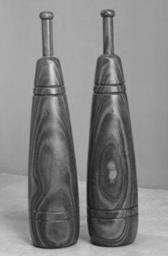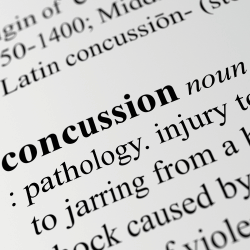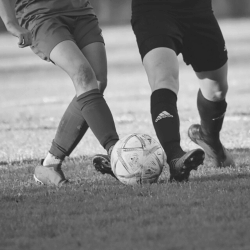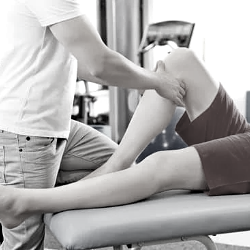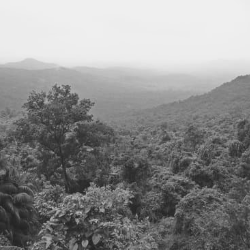Indian Clubs
Posted on January 3, 2020 by Movement Health in Physical Culture
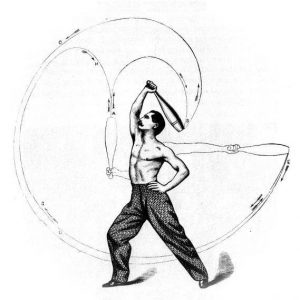
Indian Club history
As per their name Indian Clubs originated on the Indian subcontinent. Some of the earliest references to clubs can be found in Hindu epics prepared between 400BC and 400AD, these texts referred to a style of club called the Gada (Heffernan, 2017). The Gada is a single mace-like weapon that consists of a bamboo pole with a large stone affixed to one end (Alter, 2004) and is considered a precursor to the Indian Club. The Hindu God Vishnu is said to have forged the first Gada and imagery of the Gada is closely associated with Lord Hanuman the Hindu God of wrestling (Heffernan, 2017).
What is difficult to ascertain is when (or why?) the Jori or Mugdal emerged. These carved wooden clubs resemble a slightly conical cylinder, have a handle on one end and are between 750-1500mm in length. Jori clubs come in a pair (Jori in Hindi means ‘pair’) and it is thought they may have been designed this way as means of conditioning soldiers for war (Alter, 2004). There are sculptures in Bengal, India dated between the fifth and seventh century AD that show figures holding Jori (Wikipedia, 2014). Like the Gada; the Jori (or Mugdal) is considered a precursor to the Indian Club (Alter, 2004).
During the twelfth century the first training manual for club training was written. The manual was called the ‘Manasollassa’ and it included descriptions of club swinging, wrestling and physical exercise. Around these times clubs were used during combat; however they would eventually be replaced by more efficient weapons such as swords and spears (Heffernan, 2017).
Once the use of clubs for combat was superseded by other weapons, their primary use was as a means of physical preparation; this was especially evident with wrestlers. Starting around the sixteenth century AD the Moghul Empire incorporated parts of India and Persia; during this period there was a lot of exchange between the different wrestling cultures (Heffernan, 2017). It is possible this is when the Persian Mil emerged, the Mil looks very similar to the Indian Jori and it is still used today as a part of the Pahlavani system that is practiced in Iran (Alter, 2004).
Persian Mil (Image credit: bodymind-fit)
‘The Indian Clubs predecessors Gada, Jori and Mil have their origins in India and Persia.’
Indian Clubs and the British army
During the seventeenth century the East India Company arrived on the subcontinent exposing the British for the first time to the exercise regimes of the local wrestlers and their club swinging practices. As the British presence in India continued in to the eighteenth century Indian soldiers had begun to join the colonial army giving the British direct experience with the practice of club swinging (Heffernan, 2017).
Increased British interest in club swinging begun around the early 1800’s for two reasons. The first reason was medically derived; the lifespan of British colonisers in India was shorter than their compatriot’s back home and thus begun an interest in exploring the health practices of the locals to aid in adapting to the unfamiliar Indian environment. The second reason involved the military; not only were the British troops exposed to the same health risks as the civilian colonisers, it was identified that the soldiers existence was highly sedentary with limited opportunities to undertake physical training (Heffernan, 2017).
Impressed by the physiques and superior fitness of the locals, the colonial British army in India committed to the practice of club swinging. This happened around 1820 and the style of club swinging undertaken involved the use of light clubs being merged with some of the drills that were being practiced as a part of the Swedish Gymnastics system (learn more here) that was popular in Britain and Europe at the time (Todd, 2003).
Very quickly club swinging got some traction in British military circles. Henry Torrens, Adjutant-General to the British Forces and Peter Heinreich Clias, Army and Navy Superintendent of Gymnastics Exercise were quick to embrace and endorse the efficacy of club swinging. The first known use of the term ‘Indian Club’ can be traced to Clias’s text titled ‘An Elementary Course of Gymnastic Exercises’ published in 1823 (Heffernan, 2017).
‘During the early 1800’s the British colonial army in India began to appropriate club swinging from the local population.’
Indian Clubs and the Physical Culture Movement
It is generally accepted that the Physical Culture Movement (learn more here) began with Prussian/German educator Johann Christoph Friedrich Guts Muths (1759-1839) and his book titled, ‘Gymnastik für die Jugend’ (Gymnastics for Youth) (Pfister, 2003). Clias, one of the earliest British proponents of Indian Clubs is said to have been highly influenced by Guts Muths work (Heffernan, 2017) and such synergy is likely the beginnings of Indian Club swinging as a presence in European Gymnastic Physical Culture.
The next step in taking Indian Clubs to a broader European audience involved Donald Walkers book titled, ‘British Manly Exercises’, published in 1834. Walker’s book included the Indian Club routines practised by the British army and also added some more complex club swinging routines (Todd, 2003). With books such as Walkers increasing interest in Indian Clubs the Swedish Gymnastics and German Turnen (learn more here) organisations soon absorbed Indian Club swinging in to their gymnastics systems (Alter, 2004).
‘Around the 1850’s was an exciting time for the expansion of Indian Club swinging.’
The Increasing popularity of Indian Clubs in Britain and Europe around this time was driven by multiple factors. First to embrace Indian Club swinging some years earlier the British military felt the practice was contributing positively to the conditioning of their soldiers. Complementing the militaries enthusiasm was the medical fraternity’s embrace of Indian Clubs (Heffernan, 2017). As an example in 1842 a medical text was published by physician Chas Rogers-Harrison called ‘Deformities of the Spine and Chest, Successfully Treated by Exercise Alone; and Without Extension, Pressure, or Division of Muscles’; the book endorsed Indian Club swinging as a form of orthopaedic exercise and an image from the text is shown below (Rogers-Harrison, 1842). Harrison credited French Physician Nicolas Andry as one of his professional influences and interestingly Andry published a medical text in 1741 titled ‘Orthopaedia’ that included descriptions of club swinging (Heffernan, 2017).
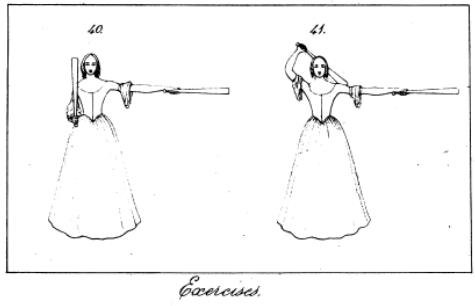
At this time the appropriation of Indian (Jori) and Persian (Mil) heavy club swinging had a great deal of momentum. It’s likely the light ‘Indian Club’ swinging being practised by British and European Gymnastic Physical Culture began to shift the shape of the club towards one that was more ‘bottle-like’ in shape (Alter, 2004).
Around the 1850’s also saw the expansion of Indian Clubs in to the United States. In 1848 many Turnen members were forced to leave Germany due to some political upheaval, many migrated to the United States where they set up Turnverein clubs; thus beginning the global spread of their Gymnastics system(Pfister, 2009), which by now included Indian Clubs. A few years later in 1855 Baron Nils Posse arrived in the United States; he was a former Swedish Soldier and a practitioner of Swedish Gymnastics. He is credited with bringing some of the first sets of Indian Clubs in to the United States and was also an early advocate for Physical Education in American Schools (Atler, 2004). The lighter style of Indian Club that was popular in Britain and Europe at the time was now a presence in the United States via the global growth of European Gymnastic Physical Culture.
‘Professor Harrison’ (image below) was a popular English Physical Culturist who was an exception to the European and British practice of swinging light Indian Clubs. He advocated for heavier clubs that more closely resembled the Persian Mil and the Indian Jori. Around the 1860’s visiting American manufacturer Sim Kehoe met Harrison and observed him swinging clubs. Kehoe was suitably impressed and in 1862 he commenced manufacturing and selling Indian Clubs in New York City. With interest in Indian Club swinging expanding in the United States, Kehoe’s next step in 1866 was to publish the popular book, ‘The Indian Club Exercise’. Kehoe’s clubs and books contributed greatly to interest in the United States around a heavier style of Indian Club (Todd, 2003).
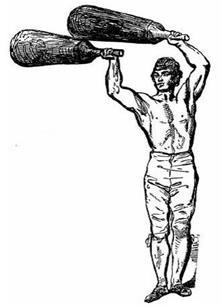
The Muscular Christianity (learn more here) movement also emerged around the Physical Culture space in the 1850’s and 1860’s. The term Muscular Christian was initially introduced in Britain via some adventure novels written for young boys and quickly it expanded in to an organisation of men who chose to express their Christian faith via health and ‘manliness’. Theodore Roosevelt was said to have helped introduce Muscular Christianity in to the United States and the movement’s legacy can be found today in the Young Men’s Christian Organisation (YMCA) (Watson et al. 2005). As Muscular Christianity became a presence in British and American society they quickly became associated with the practise of Indian Club swinging (Alter, 2004), (Fee & Brown, 2003).
The 1850’s-1860’s was a time for huge growth in the popularity of Indian Club swinging. They were being used by the military and in some areas of medicine, plus there was a variety of books available in the general population promoting their efficiency as a means of developing physical (and mental) condition. The Physical Culture systems, Swedish Gymnastics, German Turnen and Muscular Christianity had also embraced Indian Clubs.
‘The late 1800’s and early 1900’s was a ‘golden era’ for Indian Clubs.’
By now the practice of Indian Club swinging was a popular presence in British, European and American society (Alter, 2004). Correspondingly the broader Physical Culture Movement was also in full swing. The Physical Culture Movement was a health and fitness movement that began in Europe during the early 1800’s, spreading to England and the United States; the Movement’s ideology was driven by multiple factors and it had an eclectic group of contributors. Its legacy can still be found today in disciplines such as Gymnastics, Body building, modern Massage, Sport/Exercise science and Physical therapy (McKenzie, 2013).
In late Victorian Britain, Indian Clubs were used by citizens of all social classes and often the narrative around their use differed depending on an individual’s gender or background. For example Indian Club swinging could be prescribed by a medical professional as a means of orthopaedic rehabilitation or taught to an upper/middle class lady as a way to maintain feminine grace (Heffernan, 2017).
Post-American Civil War Indian clubs were one of the most popular pieces of gymnastics apparatus in the United States (Alter, 2004).
Also during the late 1800’s, Competitive sport and Physical Education had arrived; subsequently there was an increased societal interest in physical activity and health. This created a space for organisations to form that may be interested in exploring the physical benefits of Indian Club swinging. (Alter, 2004). By 1901, 270 Colleges in the United States were offering Physical Education programs and some of these included Indian Clubs. Baseball teams were using Indian Clubs as a form of player conditioning; and Indian Club swinging was practised at schools, clubs and church groups across the country (Fee & Brown, 2003).
Such was the popularity of Indian Clubs they were a part of the Gymnastics program at the 1904 Saint Louis Summer Olympics (Wikipedia, Retrieved: 3rd February, 2020).
Around the late 1920’s competitive sport was to prevail as the predominant paradigm for health, exercise and physical activity. This saw a shift away from the reforms introduced by the Physical Culture Movement and Victorian era thinking regarding health, correspondingly the practice of Indian Club swinging fell from favour (Alter, 2004).
Thanks for reading, Warwick..
Alter, J.S. (2004). Indian Clubs and Colonialism: Hindu Masculinity and Muscular Christianity. Comparative Studies in Society and History 46(3), 497-534.
Fee, E. & Brown, T.M. (2003). The Indian Club Exercise. American Journal of Public Health 93(5), 723.
Heffernan, C. (2017). Indian club swinging in the early Victorian period. Sport History 37(1), 95-120.
Pfister, G. (2003). Cultural Confrontations, German Turnen, Swedish Gymnastics and English Sport- European Diversity in Physical Activities from a Historical Perspective. Culture, Sport, Society 6(1), 61-91.
Pfister, G. (2009). The Role of German Turners in American Physical Education. The International Journal of the History of Sport 26(13), 1893–1925.
McKenzie, S. (2013). Getting Physical: The Rise of Fitness Culture in America. Lawrence, KS: University Press of Kansas.
Rogers-Harrison, C. (1842). Deformities of the Spine and Chest, Successfully Treated by Exercise Alone; and Without Extension, Pressure, or Division of Muscles. London, UK: John Churchill.
Todd, J. (2003). The Strength Builders: A History of Barbells, Dumbbells and Indian Clubs. The International Journal of the History of Sport 20(1), 65-90.
Watson, N.J., Weir, S. & Friend, S. (2005). The Development of Muscular Christianity in Victorian Britain and Beyond. Journal of Religion & Society 7, 1-21.
Wikipedia. Gymnastics at the 1904 Summer Olympics. Retrieved: 3rd January, 2020 from: https://en.wikipedia.org/wiki/Gymnastics_at_the_1904_Summer_Olympics
Wikipedia (2014). Moghalmari. Retrieved 3rd January, 2020 from: https://en.wikipedia.org/wiki/Moghalmari

